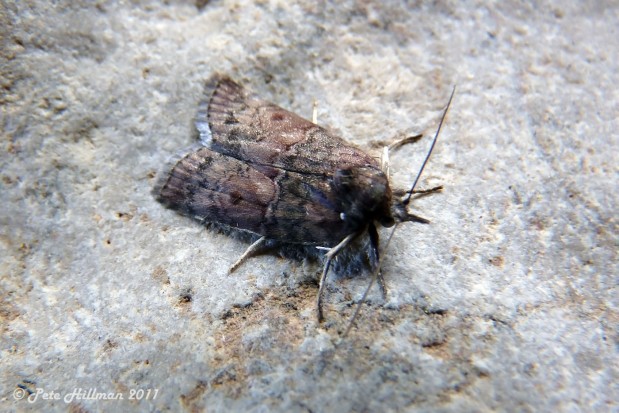
Noctuidae is from Latin, noctua, meanining “night owl”. The Noctuid moths are the largest family of macro-moths in the British Isles and has over 400 species. Globally there are about 21,000 species which are widespread across many continents. There are 14 main British subfamilies, including the Rustics, Underwings, Darts, Quakers, Snouts and many more. These owlet moths belong to the superfamily Noctuoidea, but the family Noctuidae contains some of the worlds largest moths, and the smallest, with wingspans ranging from 0.8cm to 30.5cm.

Owlet Moths are mainly medium sized, stout-bodied macro-moths, which are predominantly brown or greyish, some with distinct kidney or oval shapes on their forewings which are useful for identifying similar species. Some have quite bright underwings (actually called Underwings) whilst others, like the Snouts, maybe confused with Geometers such is their shape and pose when resting. But most Noctuid moths rest with their wings held closed and close to the body in a triangular, tent-like fashion.

Night fliers, fast and powerful, drinking nectar from flowers, sap or fruit to keep themselves fuelled up. They are very much attracted to light, and it is most likely one of these that fly through the window at night or buzz around your head when out after dark. Others though, like the Silver Y, maybe seen sipping nectar late in the evening, or even earlier on a hot summer’s day. The caterpillars are typically bald and fat-bodied, and feed at night. Most feed on the stems, leaves and roots of broadleaved herabceous plants, and some on the leaves of trees and shrubs. Some called ‘cutworms’ feed on grasses, and can be serious pests to cereal crops severing roots and stems clean through.



All photographs taken in 2011, rear garden, Staffordshire.. © Pete Hillman 2011.
The name Noctuidae remined me of a question I’ve been meaning to ask. I once read that most moths (I assume in the U.S. – don’t know about elsewhere) are noctural. If this is the case in the U.K. too, how are you able to ge so many good shots of months duringthe day?
LikeLiked by 1 person
Thank you for your excellent comment, David 🙂 Yes, most moths are nocturnal, but you would be surprised how many of them fly during the day, or that come out early evening to feed. Many are disturbed from their resting spots during the day also. Most of mine are discovered at night which are attracted to my shed light and moth trap. The next morning I photograph them and then release them.
LikeLiked by 1 person
Excellent shots! You’ve inspired me to be on the lookout for moths this year😊
LikeLiked by 1 person
Thank you, Belinda 🙂 I hope you get to catch some and snap them! I trap ’em and snap ’em, and then release ’em 🙂
LikeLiked by 1 person
Lovely photos of subtly beautiful (and almost fluffy!) little moths. I should think identifying these little guys is quite challenging?
LikeLiked by 1 person
Thank you 🙂 Yes, some of them can be quite challenging to identify, especially as some species look so similar. But I do have some good reference books to help me.
LikeLiked by 1 person
Nice post…🙂🤗
LikeLiked by 1 person
Thank you, Eliza 🙂
LikeLiked by 1 person